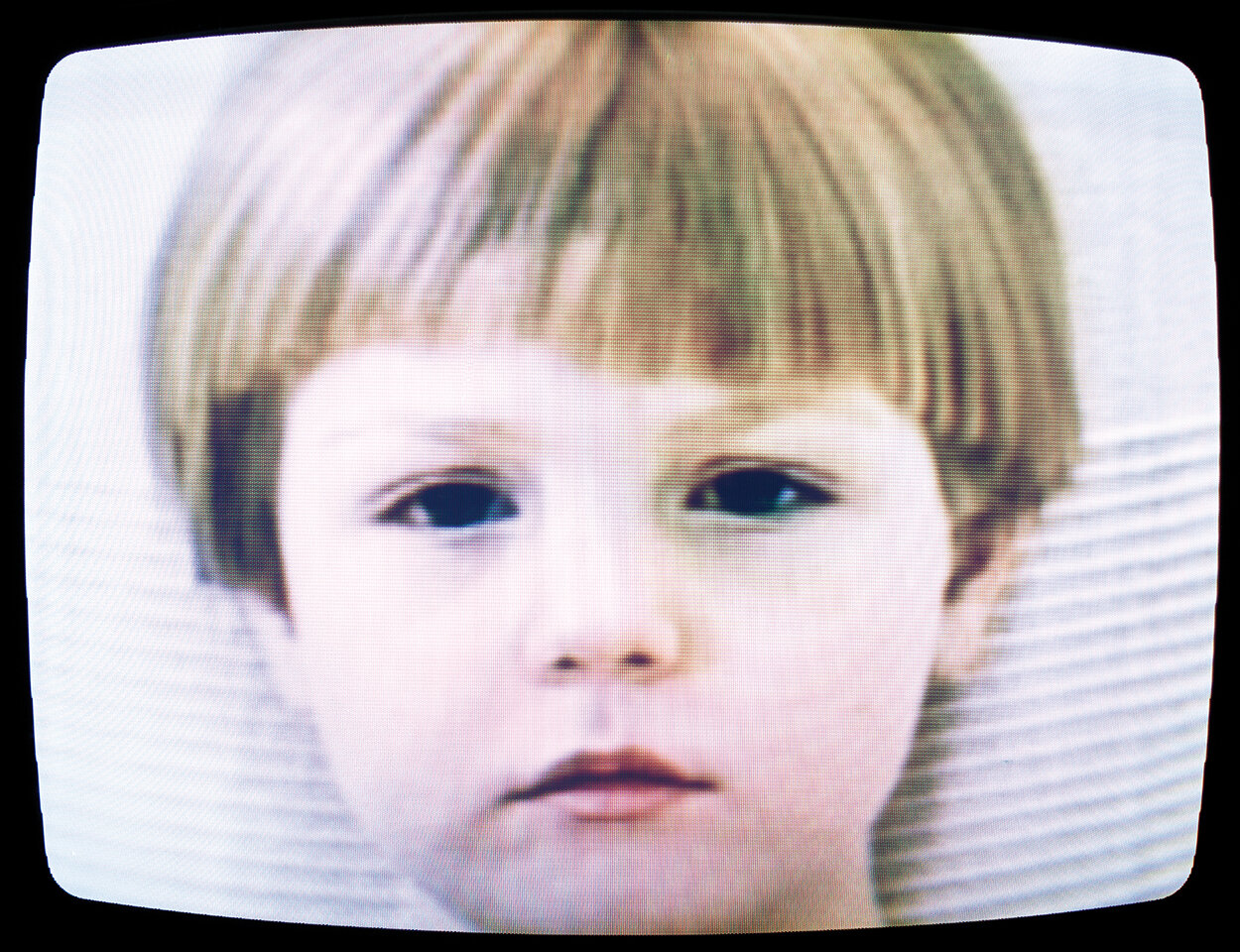The video installation Spectatorship (SYN.IDLE) explores the spectator's shifting perception of his or her role. Videos displayed on a CTR television show children seemingly staring blankly into “space”. The children were filmed as they watched television.
The CTR television, in turn, is equipped with a camera; its signal is transferred to a second monitor in another room. While looking at the videos of the children watching television, the viewer is automatically recorded by the surveillance camera. Thus, the observer is simultaneously being “observed”, negating the perceived role of the spectator.
The observer-perspective serves as a precondition for the construal of “otherness” within our cultural system. Discourse on spectatorship1 in general identifies the gaze as desire, implying a division into "desiring subjects on the one hand and desired objects on the other". This division is increasingly overcome by the "transgression of the ever more blurred boundaries between exclusive object attributes and coherent subject attributes." "Seeing" and "being seen" are assigned a special role in the "desirer-structure" of Spectatorship (SYN.IDLE), as the object can function both as object and as subject, or as both simultaneously. The observing individuals are part of the whole, though without the power to decide this for themselves.
Plato's "divine quality of man", the observing of the observer, is taken ad absurdum with the observing of the observer who is observing the observer. The observing of the observer represents an interplay between constellations of spectatorship and projection conditions. Looking at the screen, the "subject" is synchronized, transformed into a desired "object." Spectatorship (SYN.IDLE)2 is an attempt to blur the boundaries of dualistic consciousness, with either acting or perceiving reality (subject) on the one hand and active or perceived reality (object) on the other. "We can only be certain of being seen if there is actually a camera pointed at us".3
1) Ursula Frohne: video cult/ures-multimediale Installationen der 90er Jahre; 1999, Museum für Neue Kunst ZKM Karlsruhe: "In the absence of a German expression that corresponds to the semantic content of the Anglo-American term 'spectatorship,' I use this designation analogous to Irit Rogoff's interpretation of the expression in her discussion of 'Spectatorship and Difference', which identifies the semantic field between 'audience,' 'observer position,' and 'visual culture.' See Irit Rogoff, "Other's Others," in: Interventions.
2) SYN – Synchronous Idle: This is a control character that triggers specific actions in printing or computer applications, yet does not code for any visible typographical mark (glyph).
3) Roland Barthes, Camera Lucida, Reflections on Photography, Frankfurt/M. 1989, p. 21






